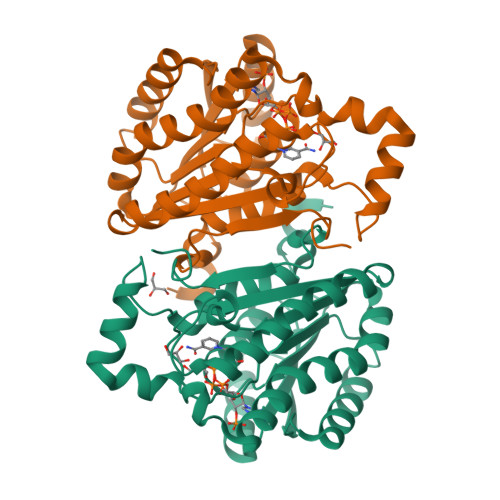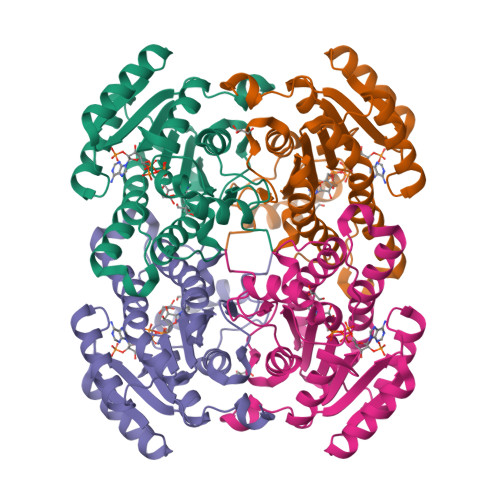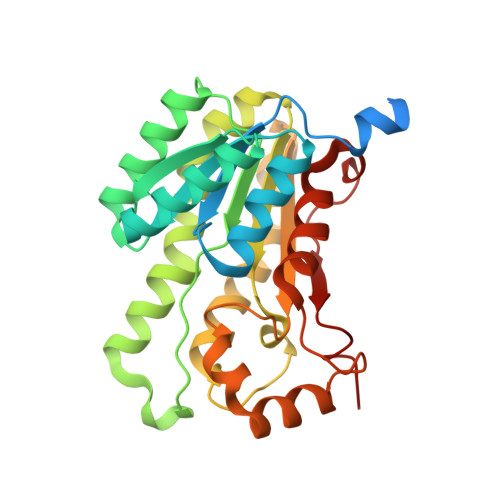Crossing the Border: From Keto- to Imine Reduction in Short-Chain Dehydrogenases/Reductases.
Roth, S., Stockinger, P., Steff, J., Steimle, S., Sautner, V., Tittmann, K., Pleiss, J., Muller, M.(2020) Chembiochem 21: 2615-2619
- PubMed: 32315494
- DOI: https://doi.org/10.1002/cbic.202000233
- Primary Citation of Related Structures:
6Y4D - PubMed Abstract:
The family of NAD(P)H-dependent short-chain dehydrogenases/reductases (SDRs) comprises numerous biocatalysts capable of C=O or C=C reduction. The highly homologous noroxomaritidine reductase (NR) from Narcissus sp. aff. pseudonarcissus and Zt_SDR from Zephyranthes treatiae, however, are SDRs with an extended imine substrate scope. Comparison with a similar SDR from Asparagus officinalis (Ao_SDR) exhibiting keto-reducing activity, yet negligible imine-reducing capability, and mining the Short-Chain Dehydrogenase/Reductase Engineering Database indicated that NR and Zt_SDR possess a unique active-site composition among SDRs. Adapting the active site of Ao_SDR accordingly improved its imine-reducing capability. By applying the same strategy, an unrelated SDR from Methylobacterium sp. 77 (M77_SDR) with distinct keto-reducing activity was engineered into a promiscuous enzyme with imine-reducing activity, thereby confirming that the ability to reduce imines can be rationally introduced into members of the "classical" SDR enzyme family. Thus, members of the SDR family could be a promising starting point for protein approaches to generate new imine-reducing enzymes.
Organizational Affiliation:
Institute of Pharmaceutical Sciences, University of Freiburg, Albertstrasse 25, 79104, Freiburg, Germany.


















